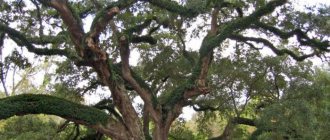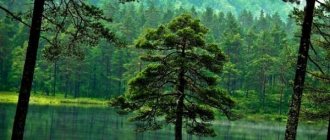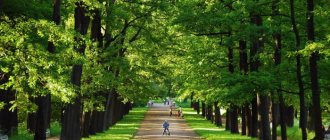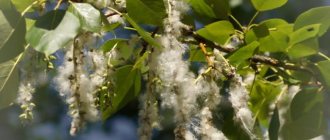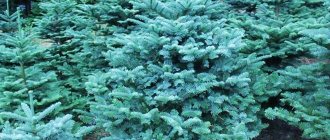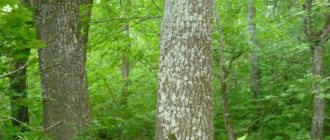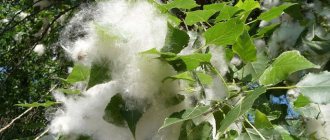- Description of oak. What does oak look like?
Oak - since ancient times was considered a sacred tree among many peoples, surrounded by special honor and even worship. Ancient Celtic Druids performed their rituals in sacred oak groves; our ancestors, the ancient Slavs, also revered oak in a special way; in Slavic pagan mythology, this tree was associated with the supreme god Perun. But if we discard the mythological aspect, then since ancient times people have noticed that the oak has extraordinary power and strength, slow growth, which, however, is compensated by its durability, the old oak has become a symbol of wisdom and knowledge, because if it could speak, how many interesting things it could tell us .
What does English oak look like?
The common oak is a deciduous tree, its height reaches 50 meters, the girth of the trunk is up to 2 meters.
It grows upward for an average of 200 years, then expands for the rest of its life. Using this feature, you can determine approximately how old the tree is. The lifespan of individual individuals is up to 500, or even more years. The oldest representative of the species grows in Lithuania near the village of Stemluzh. Scientists were able to determine the approximate age of the centenarian - about 2000 years; historical documents contain his description. The Stemluzh oak tree still blooms and periodically bears fruit.
The oak root system has a main core that goes deep into the ground, due to which the tree receives reliable support and high vitality. Over time, lateral root processes of the first, second, third, etc., form and develop. order, the system takes on a spherical shape. The longest stem of a mature tree can be located 20 meters above the ground or deeper.
A young plant has an even light gray bark with a smooth surface; with age it darkens and thickens up to 10 cm by the end of the oak’s life, becoming covered with deep cracks.
The crown has a pyramidal structure, wide, spreading. A tree with strong branches growing alternately on a powerful trunk.
Everyone knows what an oak leaf looks like in Russia and in the world: lobed with a characteristic jagged-rounded edge of a simple shape. The veins protrude slightly from the main plane.
Oak fruits are acorns. They ripen by mid-autumn in September-October. They have a round, elongated shape, brownish-brown, sometimes yellowish in color. The fruit is recessed into a flat plush on a short stalk.
The buds are brown, scaly, ovoid with a pointed tip. The scales have a ciliated edge.
Oak fruits are set in the spring with the arrival of warmth in April-May. Flowering occurs at the same time as the leaves bloom. Flowers of different sexes:
- Women's reddish tint with a short leg;
- Men's have the appearance of yellow-green dangling earrings.
There are 2 types of wood: early and late. The early species blooms leaves in April-May, sheds them in mid-autumn until October. Flowering occurs at the same time. The late representative becomes active 2-3 weeks later than its counterpart; often the leaves remain on the branches throughout the winter and fall off in the spring with the swelling of new buds. Their appearance is practically no different.
The common oak bears fruit every 4-5 years after reaching an age of over 50 years.
Spreading
The plant does not like frost, so it is practically not found in northern latitudes. It forms forests in the middle and southern regions of Russia from the Urals to the Caucasus, where its homeland is located. It grows naturally in Western Europe, Western Asia and Africa.
Humans spread the species in different parts of the Earth, but in unusual climatic conditions the tree develops worse: the trunk grows slowly, the height does not exceed 20 meters, it bears fruit unstably, and often the oak wood is not of high quality. Oak trees are used to create interesting park compositions, decorate alleys and populate forest belts.
Under normal conditions, the common species grows in river valleys and forms mixed forests. The breed favorably coexists with representatives of coniferous and deciduous trees: pine, spruce, hornbeam, birch, beech, ash, maple.
Free-standing individuals are often found.
Climate and soil
The family loves a temperate climate: normal humidity, average temperatures. Mixed forests of Russia are the optimal habitat for oak trees.
For a comfortable life, soils rich in minerals and organic fertilizers are required. Wet and deep gray loams of forests are optimal for tree development. In such areas, the life expectancy of the oak is maximum; the trunk actively grows and remains alive for a long time.
The most common types of oak trees
Duration of egg production in laying hens
The natural habitat of red oak is eastern North America.
It is a tree 25 meters high, very fond of light, with dark green leathery leaves with pointed blades. This species is considered very decorative as the foliage turns orange and bright red in autumn. In old trees, leaves turn brown and yellow during this period.
Acorns appear in the second year of the tree's life. They are wide, ovoid in shape, and fit into a flat plus. Red oak loves light, especially illumination of the top of the crown, but easily tolerates lateral shading. Also undeniable properties of this plant are frost resistance, resistance to gases and poisons. This tree is a representative of those species that drown out city noise.
The second species - swamp oak - has a very slender, rounded crown, which becomes narrower as the plant ages. The average height of the tree is 25 m. There are no branches in the lower part of the trunk; it is branched evenly and quite densely. The leaves of the tree are very beautiful, shiny on both sides, lighter below and bright green above. This species is not as frost-hardy as red or petiolate. In severe winter frosts, young shoots often freeze slightly. In this case, although the acorns are set, they do not ripen and fall off.
White oak is similar in leaf shape to swamp oak, but differs in its flatter, rounded top. The height of the tree is 25 m, the branches are very wide and spreading, the crown is tent-shaped. The bark of the tree is light gray, sometimes even white with cracks.
Towards the base, the leaves become narrow, deep, sometimes up to the midrib they are cut with narrow notches. When the leaves bloom, they have a bright red tint, slightly pubescent and silvery; at a more mature age they acquire a bright green color, slightly bluish below. In autumn, the foliage remains on the tree. This is one of the most beautiful oak trees in North America.
Large-fruited oak is common in the Great Lakes region, often reaching 30 meters in height and having a tent-shaped crown. The name of the tree is associated with the large size of the acorns. In Moscow conditions they do not ripen every year and one at a time. It grows quite quickly, is frost-resistant, but loves moisture very much.
The natural habitat of the Mongolian oak is the southern part of the Far East, but now it is also found in Korea, China and Northern Japan. This is a very beautiful tree, reaching 30 meters. Forms extensive forests on mountain slopes and along river banks. In autumn, the tree's leaves turn bright yellow-brown.
It loves sunlight and does not tolerate shading from above, but side shading, on the contrary, promotes rapid growth of the tree.
In Russia there is a serrated oak, which also grows in China, Japan and Korea. Prefers mountain slopes and dry hills. It is also photophilous, very resilient and tolerates drought quite calmly. Gives a very good offspring throughout the year.
Long-lived trees - names and ages, descriptions, photos and videos
Eastern “berry of life”: why mulberries are valued and why they used to get killed for them
Their age can reach 1000 years.
It is noteworthy that long-lived trees mainly include trees of the coniferous family. Coniferous forests make up more than a third of all forests on the planet; moreover, coniferous plants are indicators of air pollution; they are very sensitive to its purity. Most likely, it is precisely because of their longevity properties that coniferous trees are revered by many peoples. In Japan, various types of pines, junipers, spruces are considered a symbol of eternity and longevity, in Finland - a symbol of life, in China and Korea they personify loyalty and integrity, in Asia Minor - immortality and fertility. In Germany, spruce is considered a sacred tree.
Forests of trees of different species occupy a third of the surface of the continents of our planet. Throughout their lives, they produce oxygen necessary for breathing for humans, animals and other living things. Each tree has its own period, from the appearance of a sprout to drying out and death.
Another important factor influencing the lifespan of a tree is its location - whether it is a natural area or an urban planting. The urban environment with its high level of pollution significantly reduces the lifespan of plants.
In addition, fruit trees live much shorter than their non-fruit-bearing counterparts. This is especially true for cultivated plantings – gardens.
It would seem that care and care should prolong life. But in practice the opposite happens. When a person plants a fruit tree, he expects quick results from it - a high yield. By artificially accelerating growth, he ensures that the tree expends its maximum reserve of strength in a short time and weakens ahead of time, stops bearing fruit or dies. Errors in the choice of soil for planting, fertilizers used, and frequency of watering also have an impact.
In central Russia, cultivated fruit trees live relatively little:
Apple and pear trees can grow up to 50 years old;
- – up to 20 years;
- – up to 30;
- Sea buckthorn – up to 25;
- Peach – up to 15.
Only the nut is long-lived - it can live 200 years. Trees grown from seeds are stronger and live longer. In grafted trees grown from cuttings, the lifespan is reduced by 5-10 years. Southern trees (apricot, peach) in warmer climates can live 20-30 years longer than in our latitudes. But a wild pear or apple tree lives up to 100-150 and even 200 years.
Deciduous trees that make up forests live an order of magnitude longer. Under the most favorable conditions:
- Gray alder and aspen can live up to 150 years;
- Black alder, elm, birch – up to 300;
- Ash – up to 350;
- Beech – up to 500;
- – up to 1500.
Under normal conditions, these trees live 100-200 years less.
Statistics show that the lifespan of trees depends not only on the species, but also on the growing conditions. Therefore, data on the lifespan of trees is very relative.
What affects lifespan?
The main factor influencing the lifespan of a tree is its type. Thus, fruit trees live the shortest - their lifespan is calculated in decades. But deciduous and coniferous trees can live for hundreds and even thousands of years - they are the basis of the “evergreen” forests of our planet.
Coniferous trees
Coniferous trees have a longer lifespan than their deciduous counterparts. Reasons for longevity:
- Representatives of coniferous species tolerate harsh climates more easily.
- Unpretentious regarding soil. They can grow on poor sandstones and clayey soils.
- Thanks to their branched root system, coniferous trees are hardy and absorb water from the soil well.
- Thanks to the special shape of the crown, they receive maximum solar energy even at high growth densities.
- The needles, unlike the leaves, have a small surface area and are covered with wax - this helps retain moisture in it.
The lifespan of coniferous trees can be influenced by the following factors:
- Genetics. Each plant has certain adaptation capabilities.
- Soil characteristics have a much smaller impact than on the growth of deciduous trees.
- Humidity and temperature have little effect - coniferous trees grow in their familiar environment. Their lifespan can only be affected by global climate change.
- Terrain – plain, slopes, mountains. The strength and direction of the wind depends on it.
- Forest density - coniferous trees are minimally affected, since their crowns are adapted to difficult conditions.
- Diseases and pests . Fungal and bacterial infections can significantly reduce the lifespan of any tree.
Deciduous trees
The lifespan of deciduous trees can vary greatly, even within the same species. The following factors may influence lifespan:
- Soil characteristics - its density, composition, saturation with nutrients and microelements.
- Climatic conditions - humidity, average annual temperature, wind strength and direction, other indicators.
- Surroundings – how close neighboring trees grow. If the growth density is high, then only the strongest individuals live long.
- Insects and other pests.
- Location – natural environment or urban conditions. It is clear that in a city where the air is polluted, trees live less.
Fruit trees
The lifespan of fruit trees is affected by:
- Type of fruit tree.
- Soil quality and fertilizing.
- Pruning, treatment, winterization and other care activities.
- Destruction of pests, especially bark beetles, which can destroy a tree in a couple of years.
Why, despite increased care, do fruit trees live so short? Large harvests are expected from fruit trees. By artificially accelerating the growth of a tree, a person forces the tree to waste its resources - it, having used up its reserve of strength, weakens ahead of time and dies.
When is it necessary to uproot old trees?
Field dog: brief description, fighting features and lifestyle
Trees are the lungs of our planet, which is why it is so important to preserve green spaces as much as possible. Unfortunately, sooner or later any tree ages and dries out irrevocably, and it has to be uprooted
Of course, owners of private houses try to keep trees alive for as long as possible by carrying out anti-aging pruning and proper care. But, if these procedures do not help, it is better to cut down the old trunk and plant a new young tree instead.
Foresters do much the same thing: they cut down only completely dry trees, and annually replenish the green spaces with new specimens. This is the only way to preserve a green forest and get rid of possible problems in the form of diseases that old trees can cause.
Using wood
Construction
- Parquet;
- Cladding materials for walls and ceilings;
- Durable window frames;
- Veneer for finishing;
- Elite doors. Made of bog oak - both entrance and external;
- Shipbuilding and shipbuilding;
- Mining (fastening in mines);
- Wine barrels;
- Hydraulic structures;
- Wheels for horse-drawn carriages.
Medicine
Preparations and components of oak are used either independently or accompanying the main treatment. The active and astringent components of oak bark have been known for thousands of years. A decoction of the bark and leaves is used both externally in the form of lotions and compresses, and internally for many gastrointestinal diseases. And also as a rinse for toothache and inflammation of the throat and oral cavity.
In medicine, decoctions of leaves and bark are used. Specific use cases:
- Gastrointestinal pathologies;
- Poisoning;
- Kidney problems;
- Diseases. Associated with bladder inflammation;
- Use of astringent and tanning properties for gargling and mouthwash for ARVI and sore throats;
- Externally – wounds, abrasions, ulcers, eczema.
Description of flowering
Oak is a long-lived tree, has a powerful trunk and a huge crown. It can grow up to 40 m. The plant belongs to the beech family. It has many species - there are more than 600 of them, about 20 of them are found in the Russian Federation. The most familiar and dear species to us is the pedunculate oak, also known as the common oak.
In the western regions of Russia, as well as on the Caucasian coast of the Black Sea, sessile oak is found, which is very common in European countries. These tree species are the basis of Russian groves.
In the Far East, in the Amur region, you can meet a Mongolian species of oak, the Latin name is Quercus mongolica Fisch. ex Ledeb, in the forests of Transbaikalia there is even a relict grove of this variety. Jagged oak is a little less common in these parts.
As for other species, the cork oak is of great economic importance, which is found in many places - the south of France, Spain, Algeria, as well as the Caucasus, namely its Black Sea coast. In the Mediterranean countries, especially in Italy, an evergreen plant grows - holm oak, in Latin Quercus ilex
Its sweet acorns are even eaten. The same nutritious fruits are found in oak trees in the East, in warm American states such as California. For example, they were widely used for food by Indians in America. But mostly it is good feed for livestock. Acorn coffee is made from acorns produced by oak trees growing in our country.
The average lifespan of an oak is 400 years, but there are trees of a more respectable age - 700 years and older.
If the oak tree is spacious and free, if it grows in free space, its first flowers appear when it reaches 20-25 years. But if it has to grow among other trees, you can expect flowering 2 times longer. Over time, oak trees begin to produce more flowers, and accordingly, more acorns are produced as a result.
That’s why it’s so interesting to find out how oak trees actually bloom, because everyone knows about acorns, but few have seen flowers. Nevertheless, they exist and are even quite complex. Like many other crops, oak flowers are dioecious, monoecious: that is, both male and female flowers bloom on the same tree.
Pollination of flowers can occur either with the help of insects or with the help of wind. At the end of the oak flowering, an acorn fruit is formed in each ovary. The final ripening of the fruit occurs in autumn. Staminate (male) flowers are collected in inflorescences, appear as yellow-green catkins (their shade almost completely matches the color of young leaves), they hang from the branches in whole bunches.
Female pistillate flowers are also green, they collect 2-3 flowers on special short stems, and have a small red tip, which is small antennae that catch pollen.
At the same time, they are hidden at their base and even look like kidneys, which is why they are so difficult to notice. But they are the ones who will turn into the well-known acorns in the future. A large number of scale-like leaves grow in the lower part of the female flowers. They are located on a special cushion, which is a developed receptacle. During the ripening of the fruit, this roller grows, forming a plus - a characteristic saucer in which the acorn is located.
Varieties of oak also have different sizes of acorn fruits. The shape of the scales is also extremely rich: in some species the scales are small, in others, for example, in the Hungarian oak, the scales are centimeter long and turned away. Oak is characterized by a three-locular ovary of flowers, but during the period of fruit ripening only one nest will grow, resulting in a one-seeded fruit with a strong, leathery pericarp, which botanists classify as a group of nut-shaped fruits.
Spreading
The habitat of oaks is considered to be temperate climatic zones and northern latitudes, in which the plant lives in mixed forests and also forms oak groves. There are single specimens of the plant. You can find oak trees throughout the European part of the plain, as well as in the Urals. Some species grow in tropical regions, as well as beyond the equator. The culture is found in the Caucasus and the East of Ukraine.
You can meet the culture in its natural growing conditions in the territory of ravines, along woodlands and on the edges of forests. Most varieties prefer the banks of rivers or streams. In addition, in some regions the culture grows and forms large forests consisting mainly of common oak.
Oak - description, types, oak bark, beneficial properties
Oak (lat. Quercus) is a genus of shrubs and trees from the beech family. The oak is widely known for its power and strength, and the height of an oak tree can be 50 meters. These trees grow rather slowly, first adding centimeters in height every year, and only then in width.
How long does an oak tree live?
The oak tree is considered a long-liver and is often associated with wisdom and durability. And for good reason. The lifespan of oak is up to 5 centuries, although in history there are specimens that live more than 1000 years.
Description of oak. What does oak look like?
Oak is a deciduous tree. The size of the oak tree is impressive. Its average height is about 35 meters, although 60-meter giants are sometimes found. The thickness of oak can also be quite impressive. The oak trunk is on average about 1.5 m in diameter, covered with dark bark, dotted with cracks, twisting and wrinkled.
The shape of the tree's leaf depends on the type of oak. Oak leaves can be lobed, serrated, pinnate, and others. Oak branches are indirect, curved. This tortuosity is explained by the fact that the oak tree is very responsive to the sun's rays. As shoots grow, they are drawn towards the light and therefore change direction depending on the period of the year, weather and time of day.
The oak root system is very well developed. Typically, oak roots are huge and go deep into the ground. The oak crown and its shape largely depend on the conditions in which the trees grow. In forests, oak trunks are mostly straight and even, while separately growing plants on the plains spread out very widely. The girth of the crowns of such oak trees is measured in meters. If a tree has grown in extreme conditions, for example, with a lack of moisture or under frequent exposure to wind, then the crowns of such oaks are deformed and not entirely clear and regular in shape.
Oak flowers.
Oak blooms in late spring. Oak flowers are small and green, invisible among the foliage. Male flowers consist only of stamens, female flowers - of a pistil. Male flowers are collected in inflorescences that look like earrings. The female ones are on short stems; they look like green seeds with a red tip. It is from the female oak flowers that acorns grow.
Types of oak.
There are a large number of oak species growing around the world. In total there are about 600 of them, although there is evidence that there are no more than 450 of them.
The most popular types of oaks:
- English oak;
- Weeping oak;
- Swamp oak;
- Sessile oak;
- Georgian oak;
- Long-legged oak;
- Mongolian oak;
- Chestnut oak.
Where does oak grow?
Most often, oak is found in regions with a temperate climate, in the Northern Hemisphere. Although some species of these giants are also found in the tropics, however, only in those places where the air temperature is not very high, mainly in high mountain regions.
Oak trees grow well in rich soils and like average humidity levels, but there are species that thrive in swamps, or, conversely, in conditions of lack of moisture.
How to grow an oak tree from an acorn.
Oak trees bear fruit starting 30 years after planting. Oak fruits are acorns. Decorative oak species are quite easily propagated by grafting. The best option for planting an oak tree is in the fall, before the first snow and frost. However, during this period, oak acorns can be eaten by small rodents, so they are often stored until spring and planted with the onset of warm days. For planting, you must definitely choose live oak seeds, which consist of yellow cotyledons with a yellow or reddish embryo inside.
How to plant an oak?
An option for planting an oak tree is also to collect sprouting acorns in a park or forest in early spring, immediately after the snow melts. Such seeds with sprouts can be immediately planted in the ground, taking care that the fragile and not yet strong sprouts do not dry out or break off. Oak seedlings must be protected from weeds and do not forget to water during drought.
The healing properties of oak.
The use of oak is quite wide. Oak fruits, bark and oak branches are often used for medicinal purposes. In addition, oak wood, which has a luxurious texture, is highly valued.
Oak bark - medicinal properties.
Oak bark, which is used in medicine, is very useful. Oak bark is used to relieve inflammation and is an effective wound healing and astringent. A decoction of oak bark treats stomach diseases, allergies, diseases of the skin, throat, mucous membranes, and is good for gums. Oak acorns also have beneficial properties, they help with diarrhea, stomach bleeding, hernia treatment, burns, and skin problems.
Oak bark is collected in the spring for medicinal purposes. The raw materials from young branches and trunks are most valued. After collection, the bark must be dried, but not for long - 2-4 days. For long-term storage, this process must be increased until the bark becomes brittle.
Nutritional value of acorns
What oak fruits are and their calorie content are important indicators for breeding wild boars in deciduous and mixed forests. Highly nutritious acorns are used to diversify the diet of domestic pigs; dried and ground fruits are given to cattle and poultry. To preserve oak forests, the average number of wild boars should not exceed 10–20 heads per 1000 hectares of forest plantation. With intensive use of forests for fur farming, the seed and food supply is reduced, and undergrowth is difficult to form. In addition to wild hogs, oak fruits also feed squirrels, raccoons, deer, woodpeckers and jays, making up up to 25% of their diet.
Acorns from trees of the genus Quercus contain:
- carbohydrates - up to 50.4%;
- water - 34.7%;
- oils - about 4.7%;
- protein - about 4.4%;
- fiber - up to 4.2%;
- minerals - 1.6%.
The nutritional value of 100 g of acorns is 500 calories. From this amount of fruit you can get 30 grams of oil. Acorn flour is suitable for baking bread and can be added to dishes. Elderly people remember how, during the war and post-war years, oak fruits saved people from starvation. It is still customary to brew and drink dried and ground acorns, replacing coffee with this drink. It helps with gastrointestinal disorders and anemia. The taste of this coffee is pleasant, but a little cloying. A person accustomed to aromatic Arabica beans will not like the acorn drink. You should not get carried away with it; tannins can negatively affect kidney function.
Preparing acorns for coffee and flour includes soaking, drying in the sun, in the oven or in a frying pan. The amount of tannins can be determined by the size of the gizzard; the smaller the cup-shaped cap on the gizzard, the lower the tannic acid content.
Description
Oak is a powerful deciduous or evergreen tree belonging to the beech family (genus of shrubs). For natural growth, the plant requires a temperate climate, so most often it can be found in the Northern Hemisphere, sometimes in high mountain regions.
Regardless of the species, all trees have common features. The height ranges from 35 to 50 m. Some specimens reach 60 m. The trunk is very thick, and its bark is rough and covered with deep cracks.
It’s remarkable what oak looks like in autumn. The usual green summer foliage changes to a “clothing” of red, purple, orange, brown, and yellow tones.
Wood reacts strongly to lighting. Its branches are sinuous because they stretch towards the light and change their direction depending on weather conditions.
As for the root system, it is as powerful and well developed as the above-ground part and goes deep into the soil. Giants prefer to grow in nutritious soils. In this case, the humidity should be moderate. But there are representatives who have chosen swampy or arid places.
Flowering occurs in late spring with the dissolution of small bisexual green flowers. Moreover, female flowers contain only a pistil, while male flowers (collected in inflorescences) contain only stamens. Pollination occurs with the participation of insects or wind.
After flowering, a fruit is formed - an acorn of different lengths with a cap, the so-called plus. The shape of the fruit and the appearance of the pluses determine the varietal identity of the oak.
Problems: fungus, worm larvae
Acorns can be damaged by various fungal diseases. The marsupial fungus Stromatinia pseudotuberosa causes mummification of acorns, in which the seed turns into a black, loose mass of fungus. Some fungi cause rot, a sign of which is a layer of cobwebby or filmy mycelium on the seeds. Penicillium fungi cause yellowing of the cotyledons.
The larvae of some insects grow and develop in acorns, for example, the larvae of the acorn weevil. The larvae feed on cotyledons, gnawing holes in them.
Important!
A sign of damage to acorns is holes in the outer dense shell.
First of all, insects damage single-growing trees and edge oaks, as well as thinned plantings.
Lifespan of trees
The lifespan of trees depends on their species and growth criteria. Some of them are capable of growing for hundreds of years, the lifespan of others is limited to decades, and below is a table of the lifespan of trees, as well as information about the lifespan of their individual species.
Lifespan of trees, oak
The phrase “hundred-year-old oak” has been understood by every person since reading children's fairy tales. Indeed, the pedunculate or summer oak (Quercusrobur), widespread throughout Europe, lives up to 1500 years and this is a real life expectancy record among Russian trees.
Birch lifespan
The birch is considered the emblem of the Russian Federation, but its growing area is much wider: from France to Altai. The most common species are warty birch (Betula Verrucosa) or weeping birch. On average, a birch tree grows for 100-150 years, but under suitable conditions it can live up to 200-300 years.
Lifespan of trees, pine
Pine is an extremely common tree in the European forests of Russia and the taiga. More than 20% of the forested area of the former USSR is occupied by common pine (Pinus sylvestris), whose lifespan is only 300 years. “Only” because the other types of pine trees - European pine (Pinuscembra) and Siberian pine (Pinussibirica) live a little longer - 1000 and 500 years, respectively.
Maple lifespan
Several types of maples grow in the Russian Federation and their lifespan is different. Thus, the white maple (sycamore) can live for several centuries, but the ash-leaved maple imported from North America lives only up to 100 years.
Poplar lifespan
Poplars have filled the streets of Russian cities, and the conditions for their growth cannot be called suitable. But in nature, poplar, like its closest relative, willow, can live up to 80-100 years.
Life expectancy of trees, table
| Tree name | Tree height | Lifespan of a tree |
| Home plum or prune (Prunus domestica) | From 6 to 12 meters | From 15 to 60 years |
| Gray alder (Alnus incana) | From 15 to 20 (in suitable conditions up to 25) meters | From 50 to 70 (in suitable criteria up to 150) years |
| Aspen or trembling poplar (Populustremula) | Up to 35 meters | From 80 to 100 (150) years |
| Common rowan (Sorbus aucuparia) | From 4 to 15 (20) meters | From 80 to (300) years |
| Western thuja (Thuja occidentalis) | From 15 to 20 meters | More than 100 years |
| Dark alder (Alnus glutinosa) | 30, maximum 35 meters | From up to 150 (300) years |
| Warty birch (Betulaverrucosa) | From 20 to 30 (35) meters | 150 (300) years |
| Smooth elm (Ulmus laevis) | From 25 to 30 (35) meters | 150 (300) years |
| Rough elm (Ulmus scabra) | From 25 to 30 (40) meters | Up to 300 years |
| White fir (Abies alba) | From 15 to 25 meters | From 150 to 200 years |
| Siberian fir (Abiessibirica) | Up to 40 meters | From 150 to 200 years |
| Common ash (Fraxinus excelsior) | From 25 to 35 (40) meters | From 150 to 200 (350) years |
| Wild apple tree (Malus sylvestris) | 10 to 15 meters | Up to 200 years |
| Common pear (Pyrus communis) | Up to 20 (30) meters | 200 (300) years |
| Norway spruce (Picea excelsa) | From 30 to 60 meters | From 300 to 400 (500) years |
| Scots pine (Pinus sylvestris) | From 20 to 40 (45) meters | From 300 to 400 (600) years |
| Linden (Tilia cordata) | Up to 30(40) meters | From 300 to 400 (600) years |
| Beech (Fagus silvatica) | From 25 to 30 (50) meters | 400 to 500 years |
| Siberian cedar pine (Siberian cedar) | Up to 35(40) meters | 400 to 500 years |
| European pine (Pinuscembra) | Up to 25 meters | Up to 1000 years |
| Spruce spruce (Picea pungens) | From 30 to 45 meters | From 400 to 600 years |
| European larch (Larix decidua) | From 30 to 40(50) meters | Up to 500 years |
| Siberian larch (Larix sibirica) | Up to 45 meters | Up to 500 (900) years |
| Common juniper (Juniperus communis) | From 1 to 3 meters (maximum 12) | 500 years (in suitable criteria 800-1000) |
| Yew (Taxus baccata) | Up to 15 (20) meters | 1000 years (2000-4000) |
| English oak (Quercusrobur) | Up to 30-40 meters | Up to 1500 years |
RU
Replant oak. How to do this correctly?
- Replant oak. How to do this correctly? To properly replant an oak tree, you need to take into account factors such as the place where the oak tree grows, age, time of year, and evaluate the root system. And also where the oak tree needs to be transplanted.
- It is best to replant oak at the age of 1, 2-5 years, until its root system has grown widely.
- Now let's figure out where to transplant the oak tree.
- So, it is worth replanting an oak tree near your house at a distance of 20-40 meters, for your safety and the comfort of the tree.
- Where else can an oak tree be transplanted?
- What time of year is best to replant oak?
- And a few more recommendations for replanting oak trees:
Let's look at how oak develops at the initial stage.
Growing from an acorn, the oak taproot first develops, growing several tens of centimeters, and only then does the stem begin to grow. Therefore, the older your oak tree, the higher the likelihood of damaging its root system during replanting.
If the oak is wild and grows in open areas, then at the age of one year its roots can reach a length of a meter or more. It is very difficult to replant such oaks without damaging the root system. Therefore, I recommend the following ways to replant an oak tree:
- Grow an oak tree yourself from an acorn at home. You can read in the article “Plant an oak tree. How to do this correctly? And then transplant it to the planned place;
- It is possible to dig up and replant wild oak, given its age from 1-2 years, even higher, for example up to 5 years, but then you cannot do without damage to the roots. When digging, take a distance from the trunk of 50cm or more;
- buy oak from a fruit nursery;
Now let's figure out where to transplant the oak
It would be rational to replant the oak tree in a place with perspective. By prospect I mean a place where he will be comfortable throughout his long life, that is, a spacious place. For example, if you transplant an oak tree near the house, it is better to do it at a distance of 20-40 meters from the house.
Why? Because this is the approximate height of a mature oak tree. This is a safe distance in case the oak branches break off due to strong winds, stormy weather conditions or other circumstances that are unlikely to happen.
And the tree itself will feel better, the roots of which can allow themselves to grow.
Another reason to replant oak at a distance from the house
Where else can an oak tree be transplanted?
- to local city parks. Usually parks are only “FOR!” Such proposals have been tested from our own experience. At the same time, you contribute to the greening of the city and set a positive example for others. For maximum effectiveness, take several photos of your event and distribute it on social networks so that as many people as possible can see your work!
- fields. Dispersing or replanting oak trees in no-man's fields is a great idea. In the form of alleys or in your own free form. Can you imagine how beautiful it will be later!
- suggest to someone you know;
- Housing and communal services or management company. They readily respond to such offers, and will also tell you: “Thank you, come to us again!” (tested from personal experience);
- sanatoriums, health camps;
What time of year is best to replant oak?
- from the nursery, the best time to transplant it will be autumn. About one month before frost. Or in the spring, before sap flow begins;
- wild seedlings from the forest can be dug up and replanted in the spring, until about the middle of the month of May. They take root well in a new place, despite the fact that the leaves may already be blooming. Don't let this scare you;
- if the seedling is domestic, then it should also be replanted either in autumn or early spring;
And a few more recommendations for replanting oak trees:
try to transplant the oak to a new place with part of the old soil in which it grew, this will allow the tree to take root better; when replanting, it is important to choose the right place so that the soil is fertile and acidic; oaks are not a capricious plant; they tolerate drought well. However, at a relatively young age of 1 to 2 years, it would be better to protect it from sunlight, otherwise the oak may burn
You can cover it with something or put something that will create shade. By mid-summer, the oak tree may become infected with an infection called powdery mildew. How to eliminate the infection is written in the article “Plant an oak tree. How to do this correctly?
Write your comments and share your impressions!
Diseases and pests
When growing oak on a plot, a gardener, despite the power and grandeur of this plant, may encounter some growing problems. Oak trees, especially young ones, are susceptible to certain diseases and can be attacked by pests. In order to prevent problems, the plant is provided with quality care.
You might be interested in: Thyme
Diseases
| Disease | Reasons for appearance | Symptoms | Treatment |
| Powdery mildew | Violation of temperature conditions, prolonged stay in cold soil | A white coating similar to cotton wool appears on the foliage of seedlings, causing the crop to first lose its decorative effect and then gradually wither | Treatment of oak with fungicidal solutions, which contain a predominance of copper |
| Mulberries - mushrooms | Lack of sanitary pruning, as well as increased soil and air humidity for a long time | Rotten spots appear on the tree, giving off an unpleasant putrefactive odor and causing shoot necrosis | Removing the affected area and treating the cut area with garden varnish, treating the wood with copper sulfate |
| Gallica | The disease is caused by a midge that damages parts of the crop. | Orange-yellow growths appear on the foliage in the form of balls, inside of which there is an insect larva. The metabolism of the tree is disrupted, the culture slows down development | Manual removal of balls, as well as treating the plant with insecticides followed by spraying with fungicides |
| Brown spot | Fungal infection | Brown spots appear on the foliage, gradually filling the entire space of foliage and fruits | Treatment with fungicidal and antimicrobial agents |
Pests
Oak trees at an early age are very susceptible to attack by various pests that can cause irreparable harm to the crop. The most common pests are presented in the table.
| Pest | Description | Fighting methods |
| Oak hawkmoth | A butterfly with a bright body covered with hairs can reach a size of 10 cm. The insects lay eggs on the inside of oak foliage. Caterpillars consume foliage, destroying the tree | Double treatment with acaricides and insecticides |
| cocoon weaver | Another species of butterfly that reaches 30 mm in length. Females lay eggs on oak trees. The resulting larvae feed on the sap of oak parts, damaging the plants and causing the seedling to dry out | Treatment with insecticides, removal of the damaged part of the plant and inspection of the seedling, removal of caterpillars |
| Oak nutcracker | A black insect with a flattened abdomen, reaching 3 mm. The insect lays eggs in the foliage, the larvae eat the sap of the stems, causing the crop to dry out and the shoots to become brittle | Treatment with insecticidal solutions |
| Goldentail | A white butterfly that resembles a moth. Its larvae eat parts of the foliage; caterpillars can reach 4 cm in size | Insecticidal treatment, as well as preventive spraying with fungicides and acaricides |
How to propagate oak
Oak is undoubtedly the king among deciduous trees. And many owners of land plots are not averse to planting this plant in their own country in order to subsequently enjoy its majestic beauty. Oak is propagated in several ways, for example, by rooting green cuttings. Just keep in mind that cuttings taken from adult plants almost never take root, but those taken from young plants are much more successful. According to DachaDecor.ru, cuttings of annual plants root by 70-90%, and cuttings of biennial plants - by 30-70%.
The time of cutting also influences rooting. The first ten days of June are best for cuttings of young plants, but May is best for cuttings of older plants.
Oak trees also reproduce well by planting fresh acorns. Harvesting takes place in September and October; for some species, even November is suitable. Acorns should be sown immediately after harvest, without allowing them to dry out. If autumn is dry, then after sowing acorns they need to be watered and it is recommended to cover them with spruce branches to prevent damage by rodents.
If you do not have the opportunity to plant acorns immediately in the fall, then dry them to 60% moisture retention. A dried good acorn should not be dry, but the top should not separate. Otherwise, the acorns are overdried.
Dried acorns are stored in a basement with excellent ventilation, the box with them should be closed in several layers: the first layer is 10 cm of sand, the second is 2 cm of acorns, the third is 2 cm of sand. Sand humidity should be 60%, storage temperature - 2-5 degrees Celsius.
If the batch of acorns is small, then you can leave it in the refrigerator, using a bag with small holes for breathing. The ideal temperature for storage will be 2-3 degrees. If you store acorns in a completely sealed bag, they will die. Every ten days it is advisable to remove the acorns and inspect them for mold. If it is found, rinse the acorn well, dry it and put it back in the refrigerator.
Storage for the winter can also be done by digging the acorns into the ground to a depth of 20 cm in the fall. They should be covered with a sheet of waterproof material, leaving a small layer between the acorns and the leaf, which will provide protection from rodents. There is no need to carry out subsequent spring treatment in the spring.
After proper winter storage after sowing in spring, seedlings should appear within a month. During germination, the top of the acorn cracks and a white root appears on the outside. After two weeks it grows to 10 cm, and then throws out the stem. In the first year of life, the tree shoots reach 10-15 cm.
What are the growing rules?
You can grow an oak tree from an acorn yourself. To do this, you should adhere to the following rules:
- the fruits are harvested in October, whole, undamaged acorns are selected;
- in a living acorn, the seed does not dangle and does not hit the walls of the pericarp;
- for wintering, the fruits are placed in jars with soil and stored in the cellar;
- overwintered fruits are placed in a humid environment at a temperature of +2…+3 degrees for 3-4 months;
- The planting site should be open and away from buildings and foundations;
- young trees protect from birds and rodents until 4-5 years of age.
Trees that grow fast
Trees that have a high growth rate grow in different parts of the Earth. They can be divided into the following groups:
- very fast-growing - they grow by about 200 centimeters per year (white acacia, paulownia, white willow, black poplar, silver maple, eucalyptus, warty birch);
- fast-growing - growth is about 100 centimeters per year (slip elm, common spruce, European larch, elm, plane tree, walnut, Scots pine);
- moderately growing - only 50-60 centimeters are added per year (Amur velvet, prickly spruce, common hornbeam, Virginia juniper, field maple, silver linden, Caucasian fir, sessile oak).
For these types of trees, indicators are presented that appear in the active growth phase, when the tree is young.
